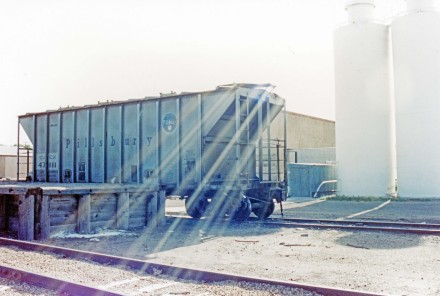The scent of baking bread finally fills the layout. Stores in the Carrizo Valley and the nearby region will no longer have only older bread from a far away, big city.
The site is not scenicked, but at least I have a building to serve finally. I only modeled the office, silos and unloading area. The actual baking facility and loading dock are just off the layout.
It sits just across the tracks from Hernandez and Sons distributor. I hope Paco and Jim like the smell of baking bread while unloading beer!
The overhead tube takes the flour to the baking facility off site.
The view from Agri-West Supply.
Overall, it turned out about like I wanted and provides a credible place to spot a car or two of flour regularly. Bakeries were typically small (a car or two) but active customers.I really like small flour hoppers. It also kind of rekindles some nice memories of walking around the “good smelling” bakery with my camera recording the comings and goings off the ATSF.
It contributes to creating a sense of place by helping portray a small city in the west in 1981. Bakeries were common across the American landscape before there was, sadly, a big push to centralize to large bakeries about the mid to late 1990s.






















